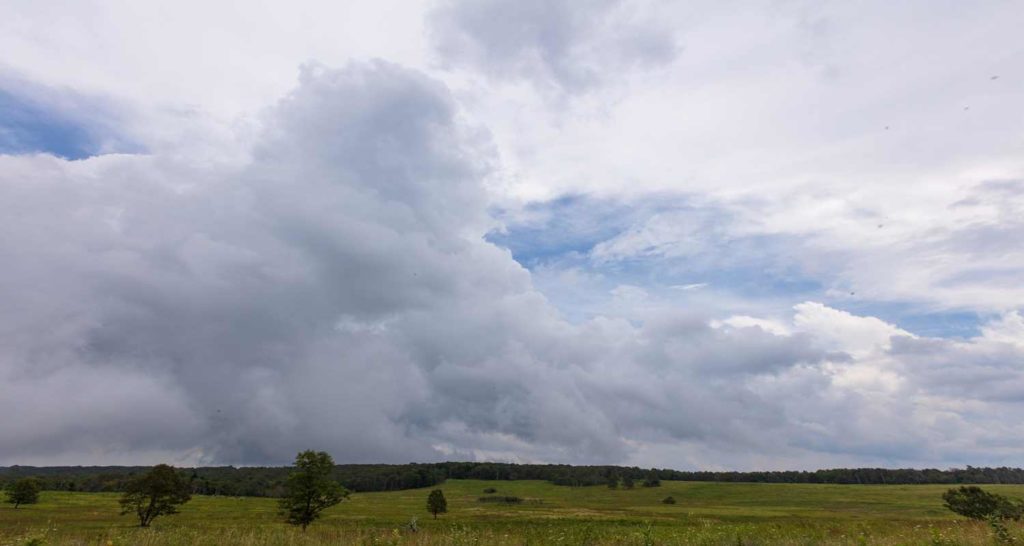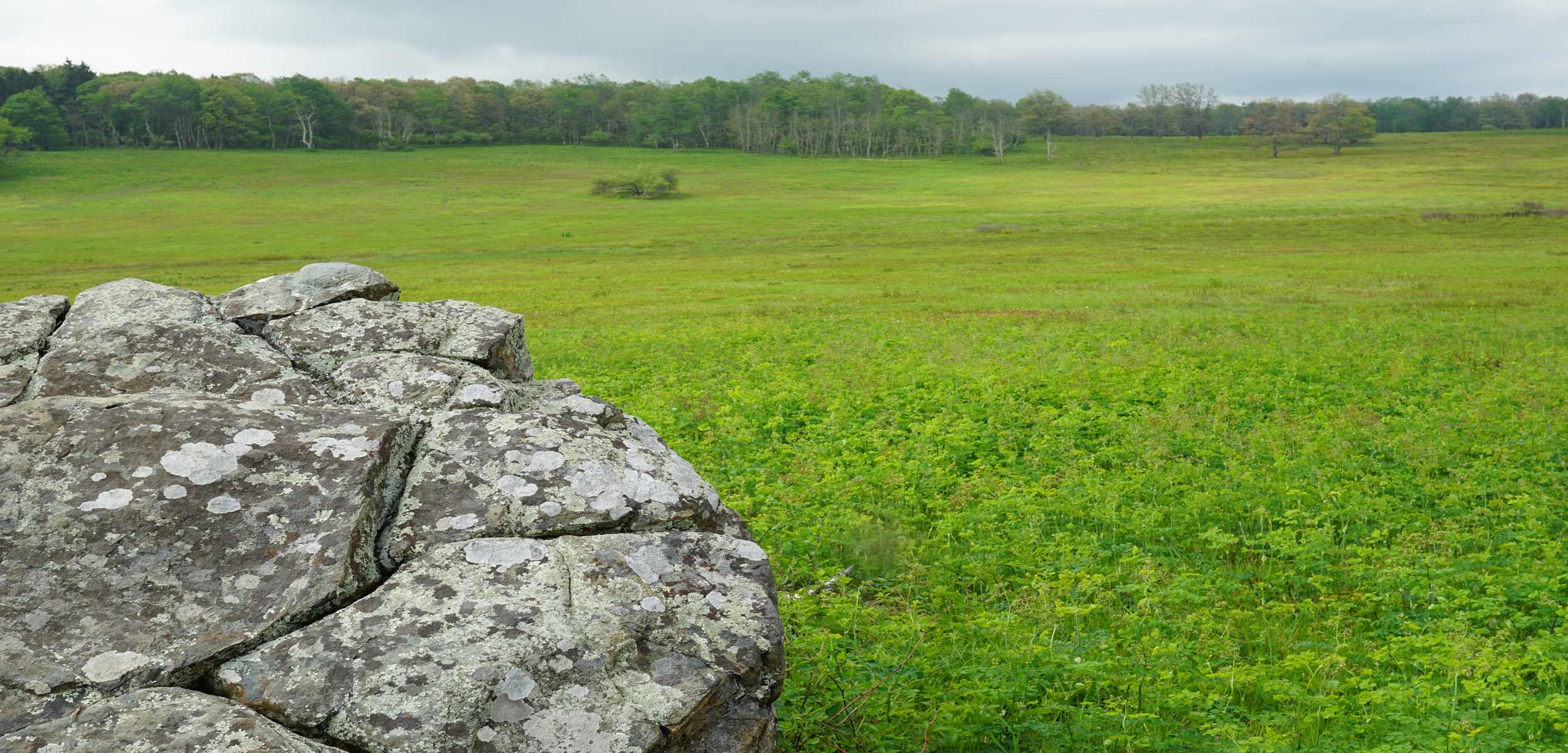As you drive along the Skyline Drive, have you ever wondered why there is a large open meadow at Milepost 51? Why are there a wayside and a lodge named Big Meadows? Is the landscape related to current management practices? Was the meadow created during the construction of Skyline Drive? Was it caused by a fire? Is the meadow a natural occurrence?
First, you can rule out that it is a result of current management practices. The Big Meadows Lodge has been in operation since 1939 so we know the landscape feature goes back at least that far. Which begs the next question: was it created as an attraction for the new Skyline Drive and Shenandoah National Park? The answer to that question would also be “no.” The meadow did, however, play a big role in the opening of the SNP. It was where President Roosevelt dedicated the park on July 3, 1936.
Created by Fire
So perhaps it was created by fire… well, in a way that is partially right. Fire does play an important part in Big Meadows’ history. Artifacts have been found in the meadow that indicate it was used as a Native American hunting ground in the Archaic period (8000 BC–2000 BC) through the Woodland period (1200 BC – 1600 AD). It’s likely that these hunters used a combination of controlled burns and hand clearing.

But why hunt in a meadow?
The low impact burns, that left big trees but cleared underbrush, allowed wild blueberry to flourish. This, in turn, attracted deer to the edges of Big Meadows. It is also likely that migratory Native Americans would have used Big Meadows as a base camp during the part of the year when hunting and gathering in the surrounding area was best.
But why is the meadow still clear?
By the early 18th century, European settlers had started to establish farms in the Shenandoah Valley region. Big Meadows was employed as summer pasture for cows, with the settlers continuing the practice of controlled burns.
Big Meadows Today
Looking out over Big Meadows today – in this wide open space longer hunted or grazed by cattle – you can still spot deer grazing (as well as other wildlife), due to the careful stewardship of the National Park Service.
To help the area retain its historic and ecological significance, portions of Big Meadow are periodically burned in accordance with the Shenandoah National Park Big Meadows Management Plan. The purpose of the burns is to reduce the amount of woody shrubs, which in turn encourages sun-loving flowering plants, including many of the park’s rare species, to flourish.
Don’t have time for a trip to Shenandoah National Park but want to see what’s going on at Big Meadows? Psst…they’ve got a webcam for that!
